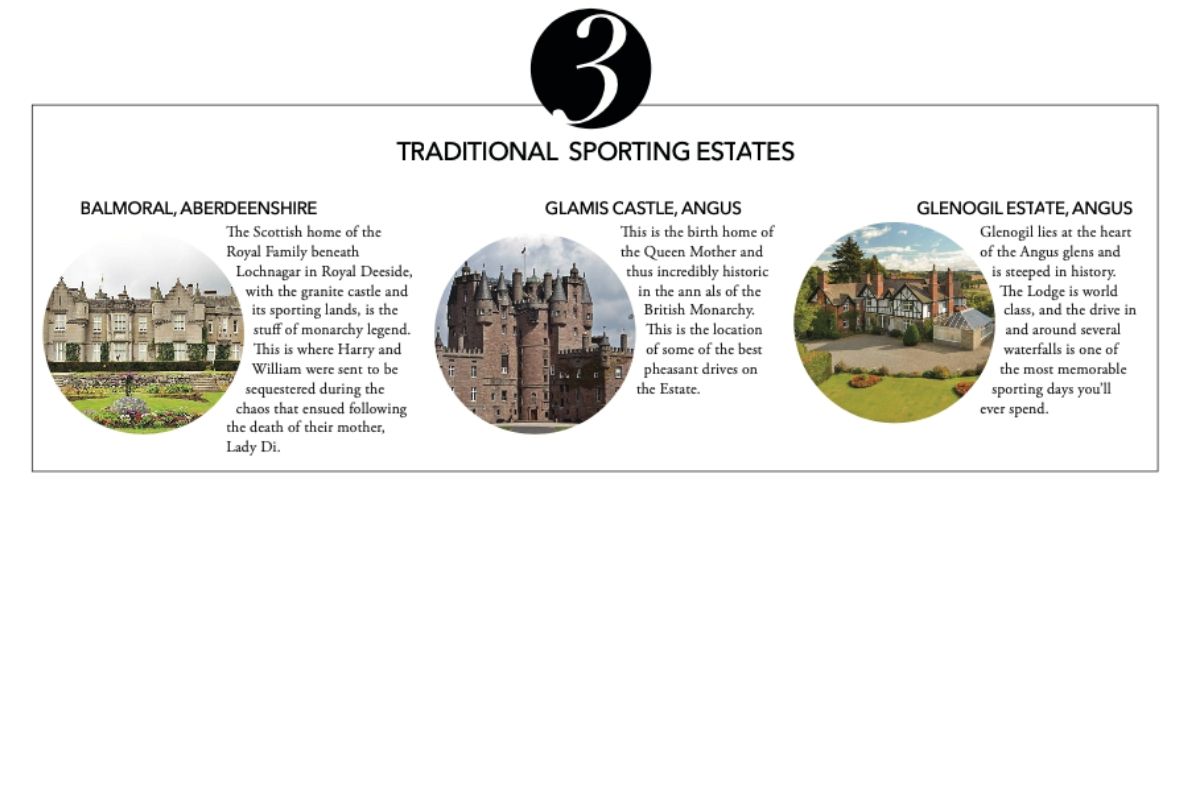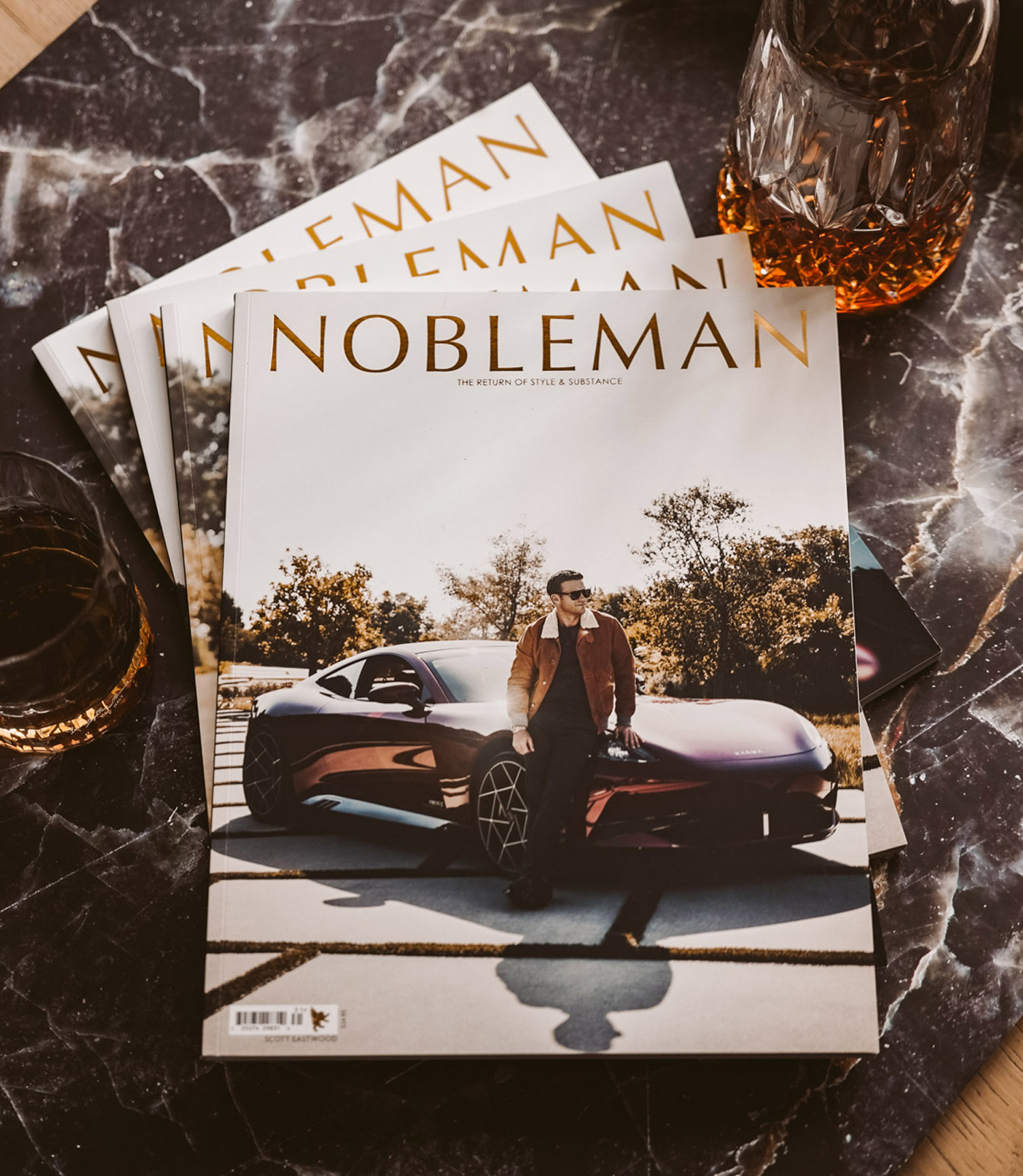NOBLEMAN’S SPORTSMAN SERIES CONTINUES WITH A FOCUS ON TRADITIONAL BIRD SHOOTING

The effervescence of fog lifts from the morning countryside as bird hounds scurry in the purity of their existential existence. Gamekeepers, shoot captain, loaders, and beaters all work with orchestrated precision, all in an attempt to keep eight shooters enamored in the wet dream of their hunting fantasies.
Seem unreal? Trust that at Nobleman, the activities we suggest are time tested and worthy of your consideration. I start this story with an asterisk. There are elements of hunting that I don’t agree with, and, for certain, taking the life of any living creature is not without serious contemplation for both humane procedures and the utilization of life. That said, unless you are a complete vegetarian by way of pacifism and have a disdain for those who indulge in meat, read on.

Driven bird shooting originated in the UK at the turn of the 18 th century and has been primarily a sport of “the classes” since its inception. After all, you do not walk through forests or climb through mountains. You and seven of your best mates leave castles or estates with an entourage of 40 people brimming with pomp and circumstance all to coalesce in a sport known as driven bird shooting. Never say “hunt,” as the two have different terminologies.
The setting is Brechin Castle, two hours north of Edinburgh, Scotland, the home of the 17th Earl of Dalhousie, which sits on an estate that has been in the family for the majority of the last 17 generations. The castle sits high above a picturesque salmon- and trout-infested brook, an exotic garden, and several thousand acres of Scottish woods, bluffs, ponds, and highlands.
If you’ve seen Downton Abbey, The Queen, or The Crown, this is not only similar—it’s identical. The scene in The Crown, season one, episode two, depicts it best. Seven friends join King George V and exit the castle surrounded by eight loaders, 15 dogs, 22 beaters, a gamekeeper, a shoot captain, and butlers loaded with trayed drinks for the gents. They board a hoard of old Land Rovers to devour the countryside with style and class. The dress is Savile Row tailored woolen breeks (short pants) and matching jackets, hunter wellies (boots), silk ties, leather gloves, and, if weather inclined, perhaps a waxed jacket.


Tradition rules the agenda, and protocols are expected to be understood and followed. Variations to the aforementioned regulations are at the discretion of the hosts. Transportation has been updated to helicopters and modern Range Rover caravans, but all else remains much the same as in the times of Damascus steel barrels and percussion cap shotguns. Shooting has a 200-year- old history in these parts and is a year-round industry for the estate. 100,000 live birds must be hatched and raised annually to populate the castle grounds with the requisite number of upland birds intended to both be presented for sport and, with skill and luck, end up in the bag. Gamekeepers raise and protect the birds. Handlers train the dogs in preparation for the season; fields are trained over decades-long periods to present safe yet sport shooting for maximum 48 guests expected annually. Footpaths and shooting stations are improved to a high aesthetic level of both fit and finish. Chicken wire is applied to all wooden platforms, bridges, and footpaths to improve traction given the likelihood of damp or extreme wet conditions.
Shooting takes place every day regardless of weather conditions. Beaters culled from the local population are added to the effort by the dozens. Dogs of all breeds are welcomed to the push. Bells and whistles, canes and chimes all add to the distant cacophony that approaches just behind the birds. Each loader is assigned only to one pair of shotguns, and a couple of keepers are in charge of all the loaders. Dog handlers are in the rear, to collect the larder. Wives join as spectators, and, of course, Lord Dalhousie himself oversees it all. Cigarette in one hand, staff in the other, gun broken over his forearm, he is always ready to pluck a stray from the sky that tries to get away. The Lord is always on the move, but he is easy to spot. He can be identified by the proprietary swing of his staff when he walks, a semi-circle of rotation in cadence with his gait. This tradition of stature goes back to antiquity. The birds present high and fast if all goes according to man’s plans, but God oftentimes intercedes.

The point of the day is polite, heartfelt camaraderie with a keen attention paid to both game count and the competency of both the guns and the keepers. The keepers are to present the birds with enough competency that the guns can manage to kill the desired game count. Variables such as the weather are disregarded as the quality estates, with decades to prepare, should have such a selection of drives developed as to be weather flexible, given the incredible diversity of conditions experienced in Scotland from September through November. Crystal-clear sunshine, crisp air of 45 degrees, and a little wind to move the birds is ideal—but rarely the case. The days can change without warning, and wearing plenty of layers is the rule. But come hell or high water, the estate is going to deliver the bag limit every day. It is the hallmark of a great shooting estate, and everyone knows it. For this reason, the loaders keep track of your spent cartridge, so the blame for a missed bag limit can rest squarely on the skill of the guns. To be honest, the volume of gunfire is remarkable, and the coordinated effort is just short of embarrassing.
The culmination of the pheasants and guns is called a “drive” as the birds are driven from the forest or covering by “beaters” who make unsavory noises with flags that drive the birds into the air. You spend the day enjoying somewhere between four and six of them. Each shooter is assigned a “peg” by drawing numbers at breakfast and then rotating throughout the day to make sure everyone gets a chance to be in the middle. The “pegs” are numbered and placed about 20 meters apart.

After the first two or three drives, you’ll enjoy “elevensies,” perhaps the best invention since the capturing of Scotch in a bottle. At elevensies, on a private shoot, the matriarch of the estate will show up with hot hors d’oeuvres and beef broth, often times thoughtfully spiked with a sherry or vodka and likely served from the back of a vintage Land Rover Defender or other well seasoned vehicle. There, the social backslapping begins with confessions of missed birds and moments of comradery and then finishes with a metal cup of slow gin to encourage a better shooting mindset in the afternoon. Flasks are the rigor de accruement and—well, having a driver, a loader, a chef, a butler, a masseuse, and seven friends in tow. In its totality, it breeds a confidence that is insurmountable.

Another “drive” and you’re off to a three-course lunch at the shooting estate. If you’re shooting at Glamis Castle, the birthplace of the Queen Mother, it means aperitifs by the fire, decades-old Bordeaux, local Angus steaks (after all, you are in county Angus), and local whisky (like Macallan) topped with some sticky pudding. In the haze of the afternoon, you and the entourage are off for two or three more drives and back to the castle for a proper British tea, a massage, and a nap/book of choice.
At 7:15 pm, you throw on the tux and head downstairs for Champagne and appetizers. A tux? Yep—every single night. You might say, “Hey, I ain’t that kinda guy. I’m happy in my camouflage hoodie, orange safety vest, and jeans.” Fellas, it ain’t about that. A dinner party in a castle after a day’s shoot is about thousands of years of elegant refinement spurred by unlimited wealth and attention to detail. Take note, and your life will be further enriched.

The eve of glamour fades to darkness only to find a knock on the door. “Sir, its James.” “Come in.” “Mr. Baum, your coffee is on the counter, with your [clears throat] non-dairy milk made from almonds. [Pause] I noticed you were late in the snooker room last night, so I’ve taken the liberty of putting some ‘headache powder’ on the tray next to your napkin. Let me know if I can provide a bracer from the galley to service your health. Breakfast will be ready at 7:15, and the shoot will commence at 8:30. The temperature is a chilly 45 degrees, and there’s a chance of rain, so bring an extra layer or two. Have a great day, Mr. Baum, and shoot well.” “Thanks, James.”
Why is nobody talking about this? The lost art of butlery is tragic in its devolution and in a true need of revival. Seriously, it’s a noble art and needs to be included in the game plan of every aspiring man. Somehow the nanny has survived, but the butler is in the process of being lost forever. It seems almost sexist.
The pageantry of meals, shooting, and fraternizing continues until the “lay day,” which I assume was created to break up the bliss and provide some perspective to the rigors of real life. Thus, in Scotland, that means a day of golf. With Carnoustie, St. Andrews, and Royal Troon within an hour’s drive, your “day of lay” is rarely a disappointment. If you’re not a golfer (you should be!), a lay day can include antique shopping, whisky tours, deer stalking, or just lying horizontal in the estate study, reading prose by Keats or Yates or taking a well-deserved nap.

WORDS BY SHANE BAUM




